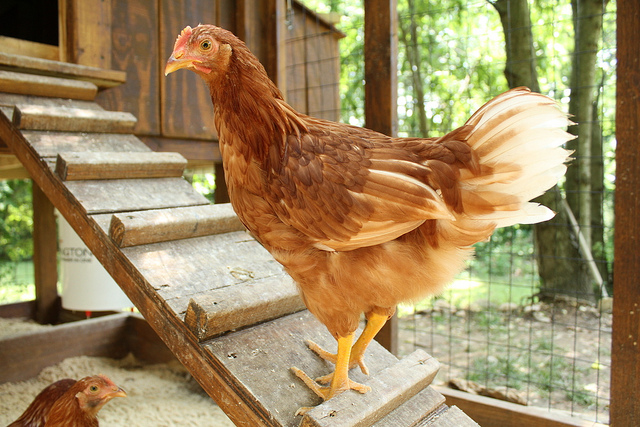



How to Construct Your Backyard Poultry Coop
Flock comfort and caregiver convenience help make backyard coops successful, according to these tips on how to construct your coop from the Purina Animal Nutrition Centre.Think of the centrepiece of your backyard. Chances are you thought of your coop. As the cornerstone of any flock enthusiast’s project, there are fewer pieces more important in flock raising than the backyard coop.
When designing a home for your birds, consider key points in construction, including: space, sanitation and protection.
“When we designed our backyard coops, we focused on comfort and protection for our hens and easy access through all seasons,” said Gordon Ballam, PhD, flock nutritionist for Purina Animal Nutrition. “The designs of our coops allow us to easily check on and care for the hens and collect eggs daily.”
Following are a few focus points from the Purina Animal Nutrition team:
Plenty of space: Space for birds is a key consideration for promoting peace.
“We follow the rule that each bird should have indoor and outdoor access at all times,” Mr Ballam said. “Each bird should receive at least 4 square feet of indoor space and 5-10 square feet of outdoor space.”
.jpg)
Covered room to roam: Each of the coops has a covered outdoor run for the birds to enjoy fresh air.
Feeders and waterers are placed in the covered runs so the coops stay dry and clean.
“This large, covered area is important for several reasons,” Mr Ballam said. “One: it provides shelter from weather and direct sunlight.
"Secondly, it provides security from predators. And most importantly, it provides a measure of biosecurity by not allowing droppings from wild birds to land in the area occupied by chickens.”
Easy access: Build coops so you can easily access the inside of the coop and the birds.
“On our coops, the doors of each of the coops are tall enough so a person can easily stand inside the coop,” Mr Ballam said.
“This allows us to enter the coops easily for cleaning and to check on the birds. Equally important is the height of the roof on the runs. Plan a roof over the run that allows a person to enter for easy cleaning and refilling of the feeder and waterer.”
Each coop also has nest boxes for the hens inside the coop. Outdoor access to the nest boxes allows the team to collect eggs without entering the coops.

Predator-proof: The coops at the Purina Animal Nutrition Centre are predator-proofed with screens on the doors, windows and runs. Galvanised welded wire, instead of chicken wire, is also used as chicken wire can stretch and allow predators access to the run.
“We buried galvanised welded wire six inches underground (parallel to the walls of the coop and run) and then bent the wire 90 degrees out from the coop (parallel to the ground, 6 inches) to prevent burrowing predators from accessing the coop and run,” Mr Ballam said.
“Then we covered the wire with dirt. If a predator tries to dig under the coop or run, they hit the buried welded wire, and stop digging.”
Good ventilation: Fresh air is essential during all seasons. The coops at the Purina Animal Nutrition Center have windows on all 4 sides and ventilation holes on top to allow fresh air to enter and stale air to exit.
“Even if you live in a cold climate, don’t seal the coop from fresh air. Ammonia buildup can be hazardous to birds,” Mr Ballam advised. “To allow fresh air to enter and exit, having vents up high on the walls of the coop is important.”
Electrical outlets: As days get shorter, hens need additional light to continue laying eggs. To provide 17 hours of light per day, consider adding electrical outlets to the coop.
“Our electrical system allows us to add one incandescent 40-watt or LED 9 to 13-watt bulb per 100 square feet of coop space,” Mr Ballam said. “We use an automatic timer to keep light and dark hours consistent so hens stay on a laying and sleeping schedule.”
Continuous access to clean water and fresh feed: Fresh, complete feed and clean water are essentials in maintaining a happy, healthy flock.
Designate areas for feeders and waterers and determine a place for feed storage. If you live in a cold climate, water heaters may be needed to prevent water from freezing.
“Once the coop is designed and constructed, add hens to their new home and monitor the transition,” Mr Ballam said.
“Be sure to provide access to high-quality complete feed and fresh, clean water to make the coop a welcoming home for your flock.”
.jpg)
Further Reading
Find out more useful information about rearing chickens in our Knowledge Centre here.








